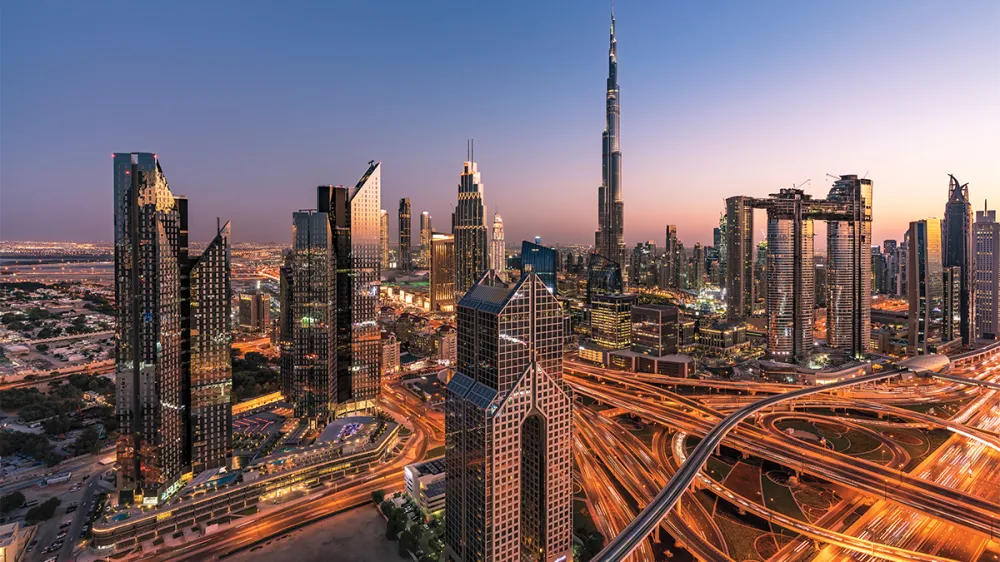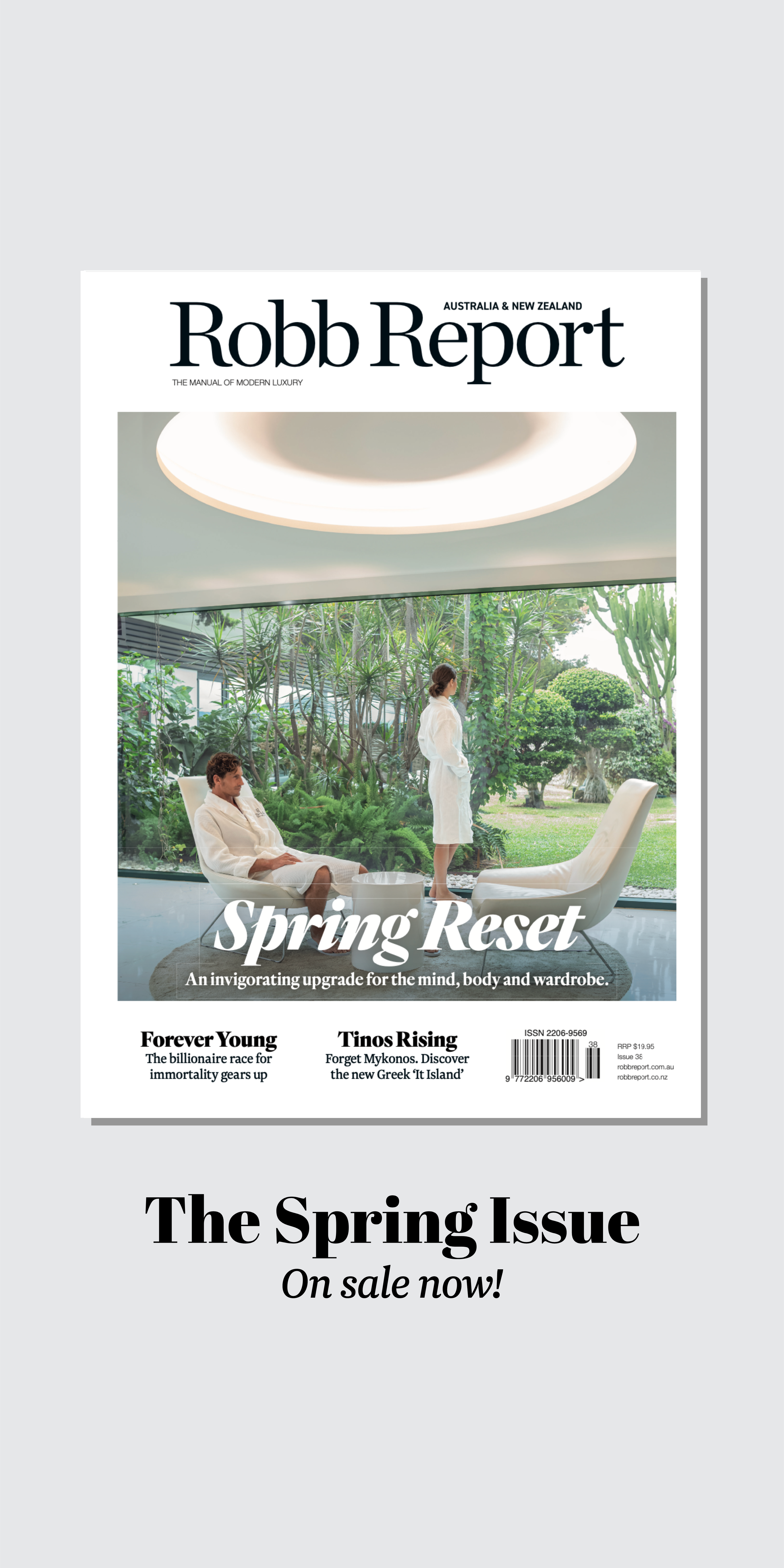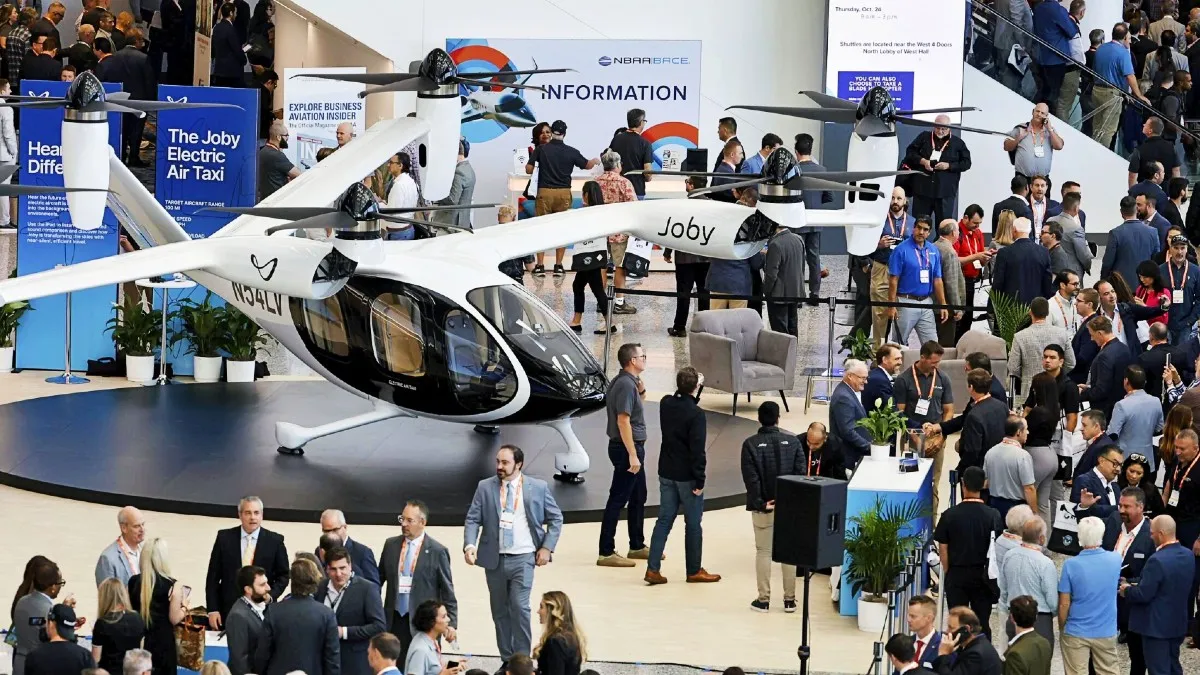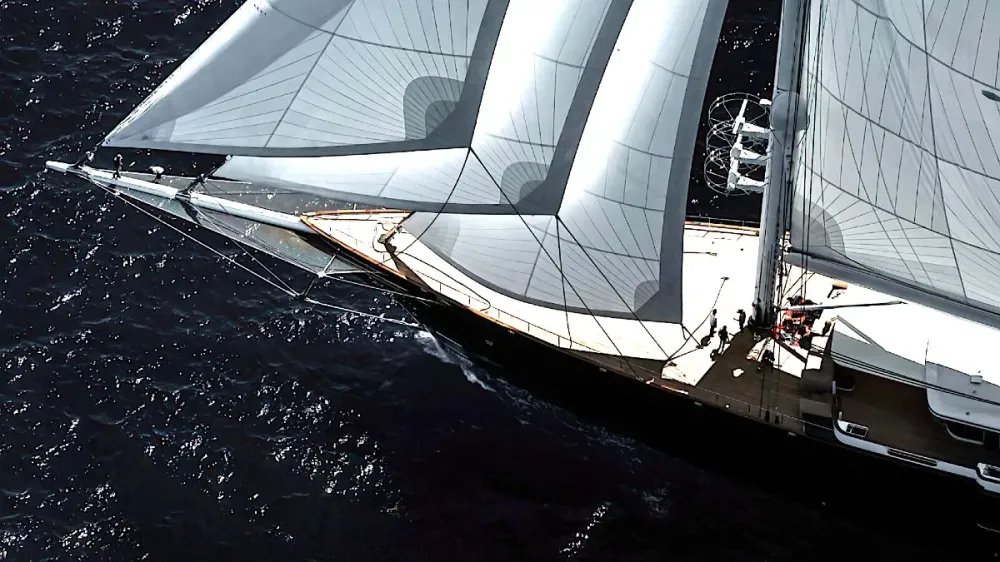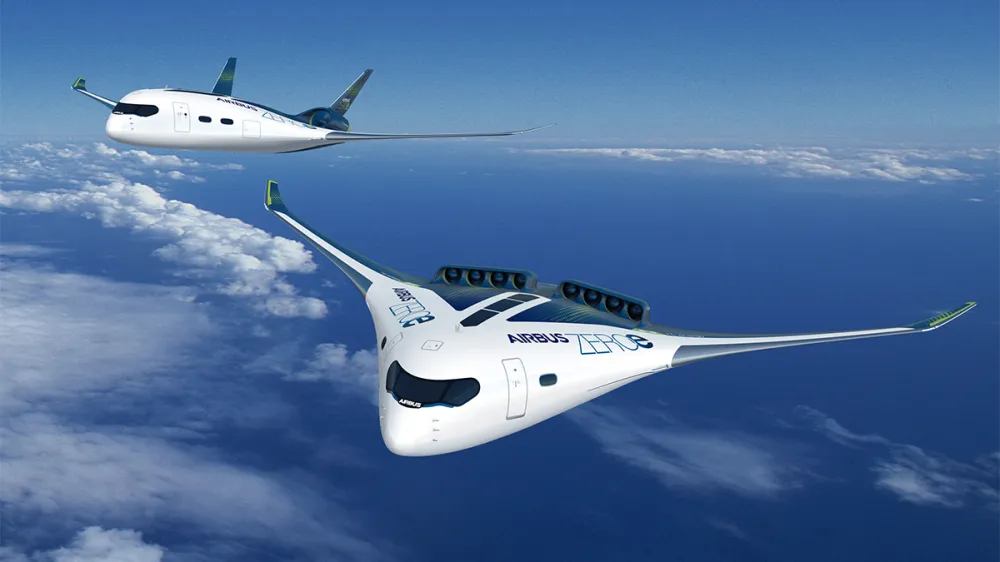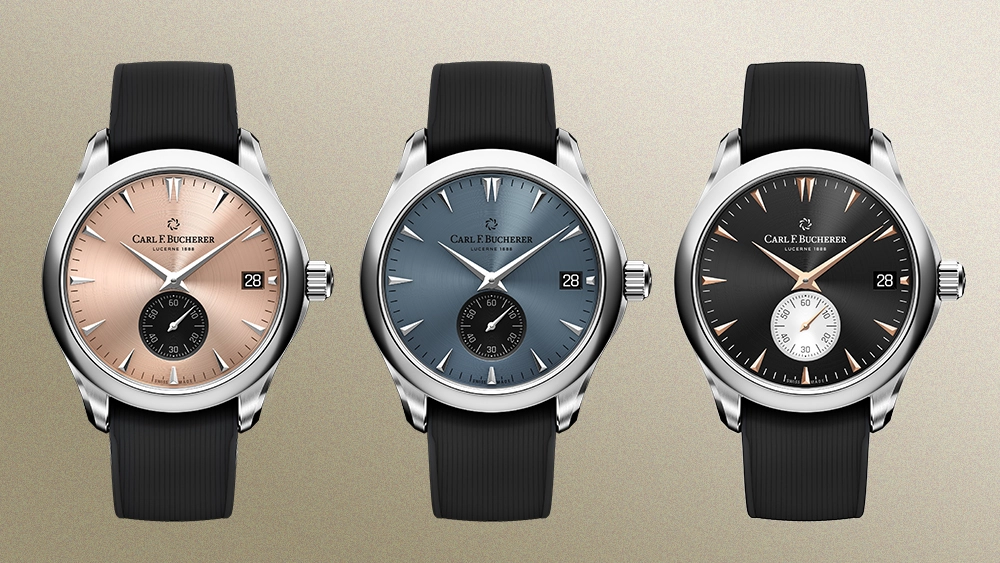
Carl F. Bucherer Drops Some Bold Colour
The classic Manero Peripheral now available in an array of new hues, each with a rubber strap.
Related articles
Last week, Carl F. Bucherer continued to build on its new releases for the year with its interpretation of a rainbow watch, embodied in its Manero Tourbillon Double Peripheral. The model reflects new design language for the company, first seen in CFB’s initial launch of the year of five all-black editions of the brand’s most popular models. Today, the Swiss watchmaker continues to unveil its fresh approach to watchmaking with the release of six new colourways of its popular Manero Peripheral.
Carl F. Bucherer first introduced its peripheral rotor movement, the calibre CFB A1000, back in 2009. As one of the few manufacturers to design and produce such a movement, CFB’s achievements in peripheral technology has come to be a pillar of the brand. By 2016, the watchmaker had introduced the next evolution of its peripheral rotor automatic movement: the calibre CFB A2050. However, this time, the brand also debuted an entirely new watch to showcase the movement, and thus the Manero Peripheral was born. In the years since, the Manero Peripheral has become a staple of Carl F. Bucherer’s catalogue, and now we get a fresh take on the model with six chic colour palettes that are ideal not only for spring but also all year round.

Since its debut seven years ago, the foundation of the Manero Peripheral has remained largely unchanged. It features sweet-spot sizing at 40 mm, a date window conveniently positioned at three o’clock, and a small seconds subdial at six o’clock. Under the hood, you’ll still find the COSC-certified manufacture calibre A2050. However, the first interpretation of the watch was quite simple when it came to styling, with a more traditional combination of dial and strap options. Now, Carl F. Bucherer offers a modern take on the Manero Peripheral with the choice of a silver-white, black, blue, salmon, brown, or green dial and the addition of a sportier hybrid rubber strap. This new look, combined with the highly wearable proportions of the model, makes it the perfect choice for everyday wear.
The all-new Manero Peripheral is priced at $7,900 and is available today. If you’d like to buy one for yourself, head over to Carl F. Bucherer’s website for more details.
Subscribe to the Newsletter
Recommended for you
How Fashion Houses and Jewelers Are Giving Swiss Watchmakers a Run for Their Money
By snapping up some of Switzerland’s best manufacturers and watchmakers, brands including Chanel and Louis Vuitton are stunning even the most seasoned collectors.
November 8, 2024
For Dubai, the Time Is Now
The bustling Middle Eastern city is emerging as an important hub for serious watch collectors
October 30, 2024
You may also like.
You may also like.
The St. Regis Just Opened a Luxe New Property in Shanghai. Here’s a Look Inside
The new 192-key hotel is the brand’s 60th location.
The St. Regis is celebrating a massive milestone halfway around the world from where the hotel brand first began.
The company just recently debuted its 60th property—the St. Regis on the Bund, Shanghai. The 192-key hotel is the St. Regis’s second opening in the city, and it combines the brand’s New York glamour with touches that honor Shanghai’s history.
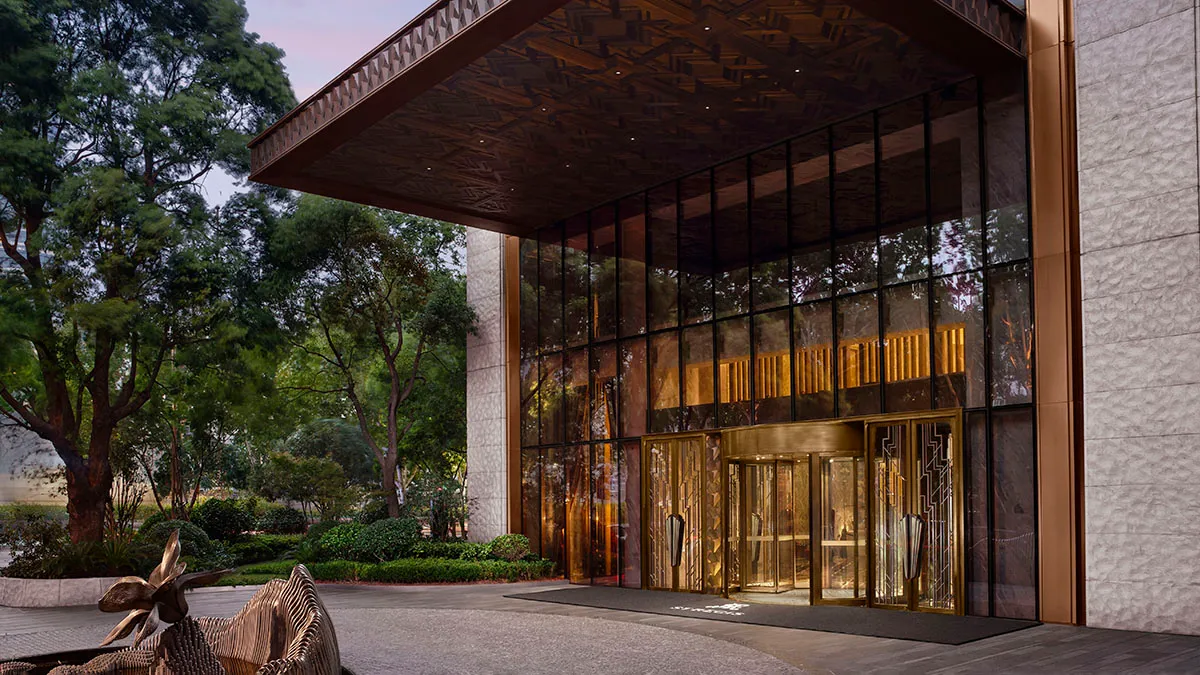
Designed by Norman Foster and Heatherwick Studio, the property features a sleek exterior and an Art Deco–inspired interior, reminiscent of Shanghai in the 1920s. The latter is replete with magnolia motifs, Su embroidery, and more than 70 original artworks. The guest rooms, meanwhile, include 13 suites with residential-style layouts and views of the Huangpu River and the surrounding Bund area. St. Regis’s iconic butler service is, of course, included as well.
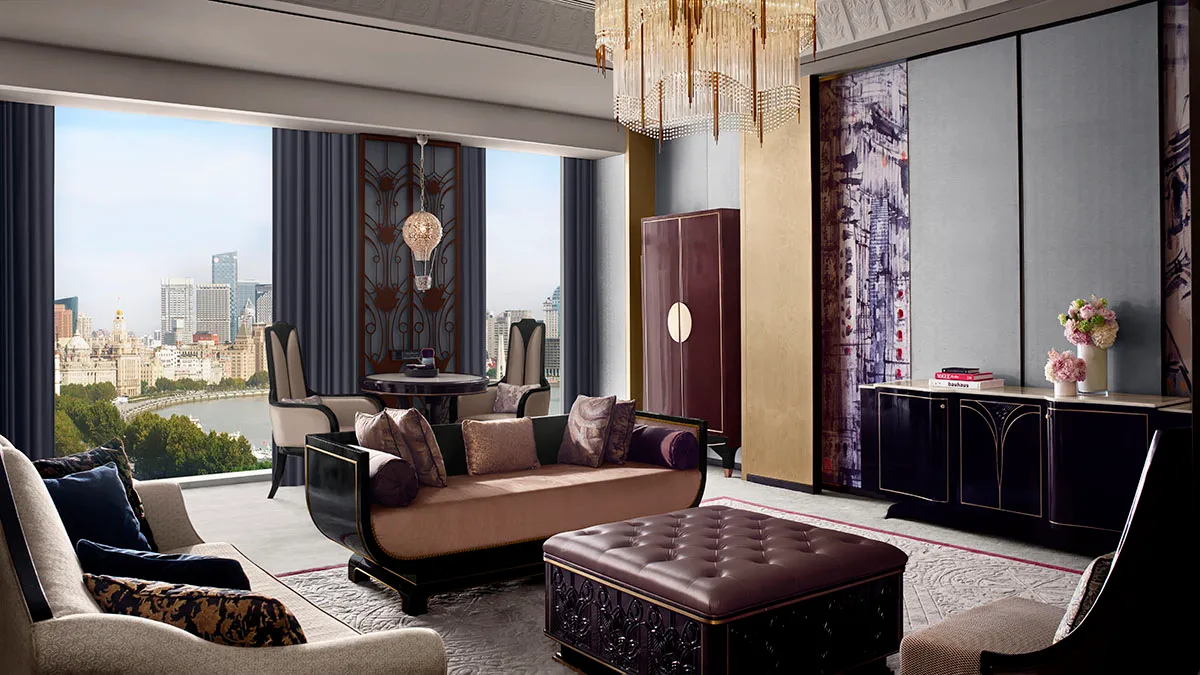
As far as amenities go, the hotel emphasises its culinary delights. The St. Regis Brasserie is an all-day affair serving up both Chinese and Western cuisine, while Celestial Court is a high-end Chinese restaurant designed for celebrations and large gatherings. The St. Regis Bar pays homage to the chain’s New York roots, serving up the brand’s signature Bloody Mary, as well as drinks like the Bund Snapper, with Shanghai’s five spices, zaolu rice wine vinegar, and osmanthus. And by the end of the year, the property will add the Drawing Room, meant for light meals and refreshments like afternoon tea or an evening Champagne sabrage.
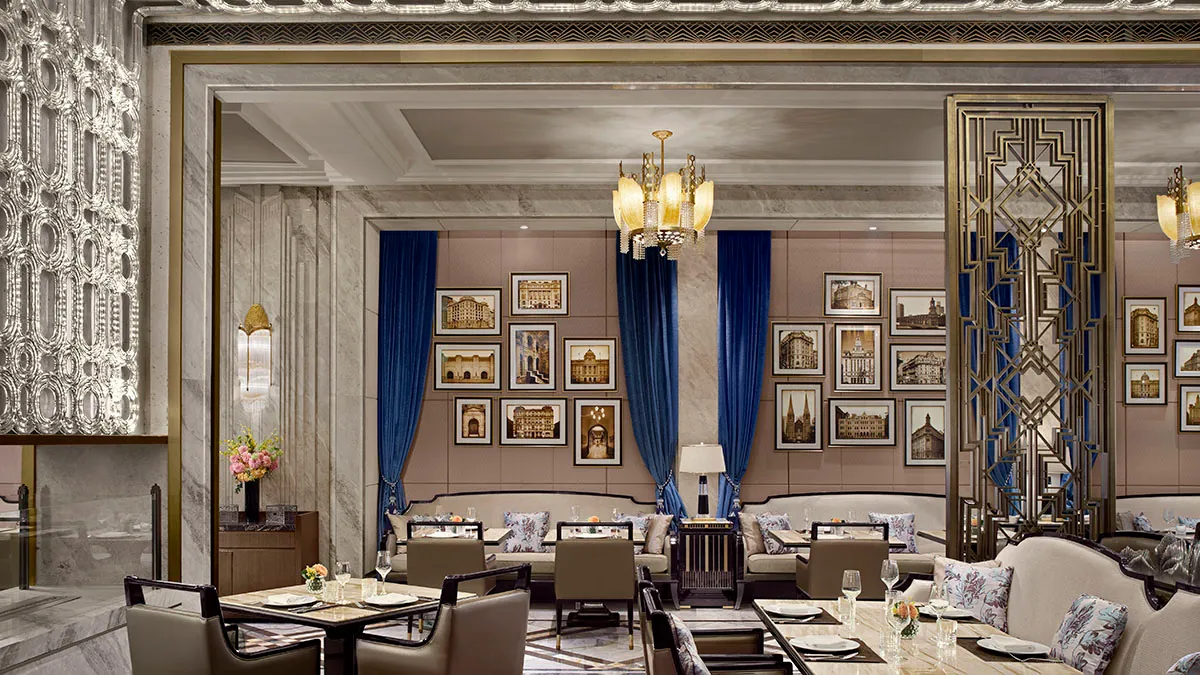
If you’re coming to Shanghai to relax, you need not look much further than the St. Regis Spa, with three private spaces and treatments that blend modern skin care with ancient practices. Or you can fit in a workout whenever you like at the 24-hour fitness centre.

“The opening of the St. Regis on the Bund, Shanghai marks a pivotal moment in the brand’s expansion, as we celebrate the debut of our 60th property globally,” Jenni Benzaquen, the senior vice president and global brand leader of the Ritz-Carlton, St. Regis, and Bulgari Hotels & Resorts, said in a statement. “With this milestone, we continue to offer our discerning guests unparalleled experiences on the Bund, blending the rich cultural heritage of Shanghai with the signature rituals and bespoke service that define St. Regis.”
Given the central location, the well-appointed rooms, and the numerous amenities, it sounds like it may be worth exploring Shanghai—and the St. Regis—for your next trip abroad.
You may also like.
Electric Air Taxis Are One Step Closer to Hitting the Skies
Electric aircraft are the darlings at this week’s annual NBAA business aviation conference in Las Vegas. Yesterday, the FAA signed a milestone rule that allows eVTOLs to move into aviation’s mainstream.
Just consider the increasing velocity of technological innovation and change and how it has shaped our lives in the last 20 years, says noted astrophysicist, futurist, and author Neil deGrasse Tyson in kicking off the 2024 NBAABusiness Aviation Convention & Exhibition (NBAA-BACE) in Las Vegas.
Organizers expect about 19,000 attendees this year visiting 8,000 exhibitors between the Las Vegas Convention Center and Henderson airport, the static display with business aircraft on display.
It was an auspicious start for the Advanced Air Mobility (AAM) sector, comprised of the new generation of electric air-taxi makers such as Joby Aviation, Archer, and Lilium. These firms have had limited displays at past NBAA shows, but yesterday was more like a formal coming-of-age party for the fledgling sector.
During the keynote, Bonnie Simi—pilot, former Olympic athlete, and Joby Aviation’s president of operations—interviewed Tyson about the pace of technology as well as the future of the Advanced Air Mobility movement (AAM), which includes electric air taxis.
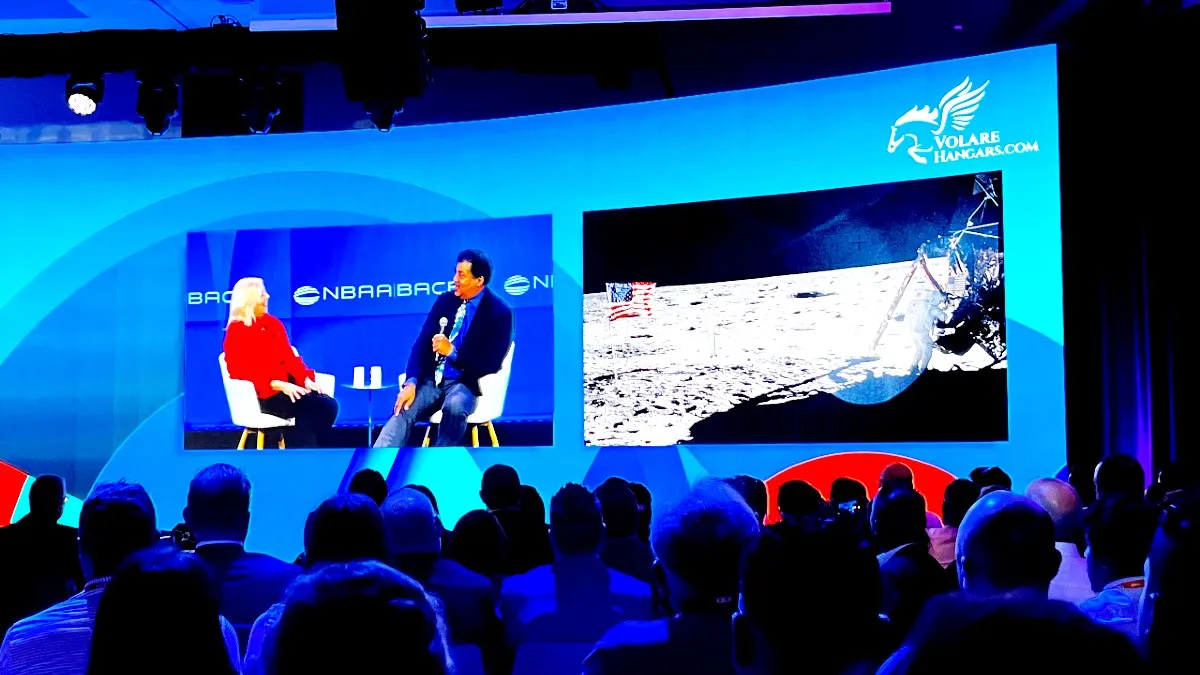
Tyson told the packed hall that history reminds us that innovations come from places you don’t often expect. Take the iPhone, he said. Apple didn’t invent GPS, music, or cellular communications, but the company assembled the technologies to create one of the most transformative devices in the history of inventions, the astrophysicist explained.
Aviation is entering a similar innovative period with advanced air mobility, efficiency, and sustainability, added NBAA president and CEO Ed Bolen, who also addressed the audience during the keynote. Bolen discussed the pace of aviation advancement with FAA’s administrator Michael Whitaker, who was on hand to sign a Special Federal Aviation Regulation (SFAR) establishing the final rule for a regulatory framework for the new category of eVTOL (electric vertical takeoff and landing) aircraft.
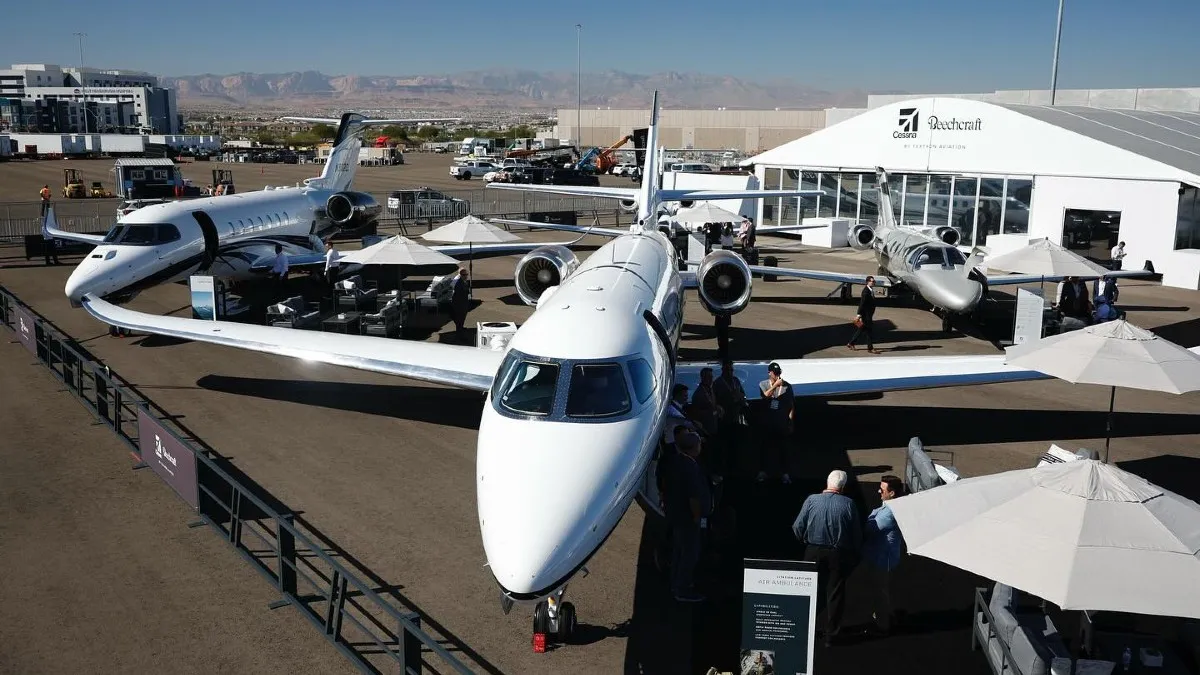
“It is an extraordinary moment in history,” Whitaker said, noting that AAM represents an entirely new aircraft category, typically involving a combination of rotor and fixed-wing aircraft.
The FAA also recognizes that you can’t certify an aircraft and do not have a way to operate it as intended, Whitaker added. This final rule creates the blueprint for integrating this technology and modeling an ecosystem for operations. “I don’t know the last time we went from an idea to a final rule in 16 months,” said Whitaker, who has had a long history working with both the FAA and aviation, including a stint at eVTOL maker Supernal. “That is light speed for rulemaking.”
The final rule, he explained, creates a flexible climate for companies to train pilots, operate these aircraft, and safely integrate new technology.
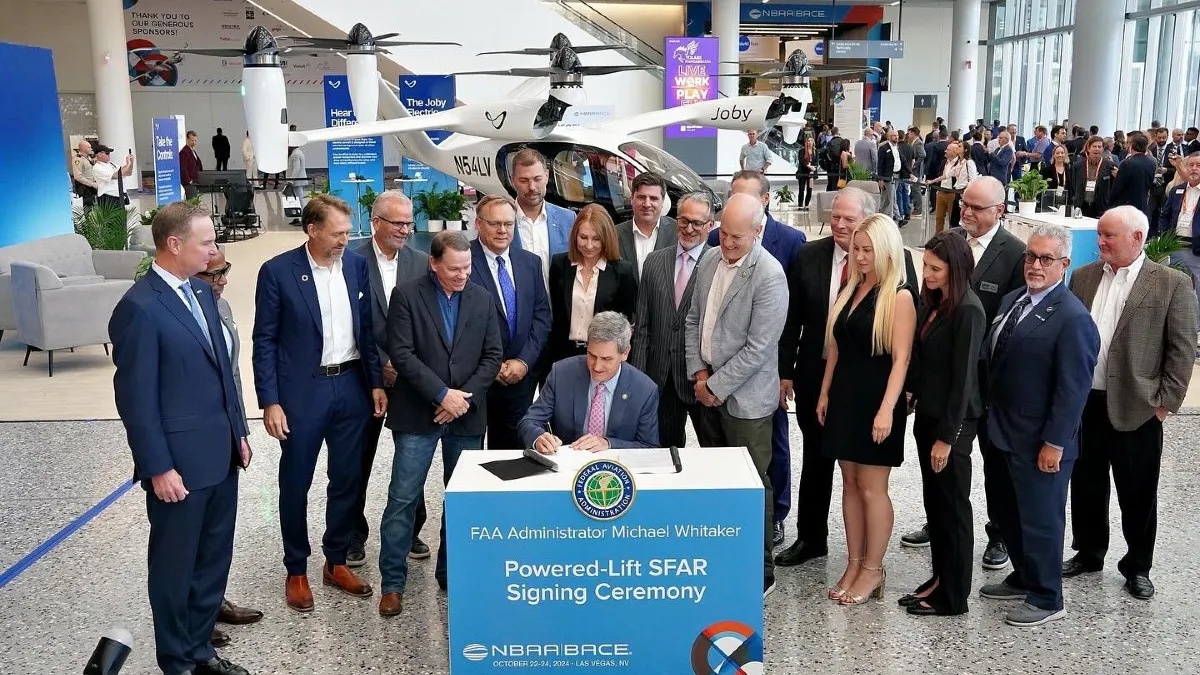
AAM represents a “seminal moment” in aviation to help achieve net zero by 2050, Bolen says. “Over the last 40 years, the industry has been able to shrink its environmental footprint by 40 percent,” he added. “Every aircraft is 25 to 30 percent more efficient than its replacement aircraft. The industry has invested significantly in developing sustainable aviation fuels and advancements with electric, hydrogen, and hybrid propulsion systems.
One of the regulatory challenges, Whitaker added, is that the FAA doesn’t yet know how the business model will evolve. “Will this require departures every three minutes to the airport or primarily serve rural communities?” he asked, citing two possible futures for electric aircraft. “We need the regulatory flexibility to allow AAM businesses to succeed and do so safely.”
The topic was explored during a seminar on how advanced air mobility infrastructure will develop yesterday. Beta CEO Kyle Clarke, which makes eVTOLs, said his firm had built charging stations in airports across different states, with the goal of creating 150 charging facilities across the country.

Signature Aviation CEO Tony Lefebvre envisions significantly more infrastructure will be needed, so “we have the proper infrastructure to be able to support 600, 700, 800 locations—or coming up with alternatives, so that the [aircraft] can continue to fly out of one location and then reposition for charging,” he said, adding that development could happen at “an accelerated pace.”
From the future, NBAA looked to the past, recognizing Laurent and Pierre Beaudoin, the father-and-son team who have led Bombardier for more than 60 years with NBAA’s Meritorious Service to Aviation Award.
Since its beginnings in rural Quebec making snowmobiles, Bombardier has grown into an $8 billion global leader in business aviation. In 1966, Laurent became company president and took the the brand public in 1969. He diversified beyond snowmobiles by purchasing a train manufacturer in 1970, and purchased Canadair in 1986, which was the leading manufacturer of Challenger wide-body business jets, to become part of the aviation industry.

“Canadair was a big entrée into aviation, but we were fortunate to have the engineering staff in place,” Laurent told Robb Report. “The only thing they lacked was an entrepreneurial spirit and we were able to introduce that into the company.” Through his career, he also focused heavily on product design. “That’s always been important to me,” Laurent says. “Beyond it functioning, why shouldn’t it look attractive? Our aircraft look fast, even when they are sitting on a runway, they look like they want to go.”
In 2020, Bombardier sold off its railway business, becoming solely a business jet manufacturer, with multiple aircraft types across different categories, including its new flagship aircraft, the ultra-long-range Global 8000. “We still see a lot of upside for our company in this industry,” said Pierre. “The service business is one—there are a lot of aging aircraft out there, and we are also moving into military applications with our business jets. We see a very bright future there.”
The company remains focused on future aircraft. It has developed a blended-wing EcoJet Research Project to study and improve aerodynamics and propulsion efficiencies to reduce business jet emissions by up to 50 percent. “There are a lot of things being said about sustainability that are not always fact based,” said Laurent. “The EcoJet Project is an example of how we are going to study the things we can do to make a huge impact to reach that goal.”
NBAA-BACE offers dozens of seminars and workshops on all aspects of business aviation. It will run through October 24.
You may also like.
From Striped Hawaiian Shirts to Colorful Ceramics: 4 Luxe Items You Can Buy at Italian Hotels
A handful of Italy’s most beloved family-owned hotels are morphing into luxury brands of their own. Here, four in-house items worth traveling for.
Hotel Passalacqua, Lake Como

These days, it takes more than the finest linens and a Michelin-starred restaurant to take the No. 1 spot on a list of the world’s 50 best hotels, which Hotel Passalacqua did in 2023. The spa is stellar, to be sure, as is the pool house, which was decorated in collaboration with J. J. Martin of La Double J. But to fully embrace the villeggiatura and sense of place, even the tiniest details matter. Case in point: the hotel’s signature brass-fish bottle opener (there are also key chains), which will mentally transport you back to Lake Como every time you reach for a cold one.
Le Sirenuse, Positano

The red cliff-top hotel with sweeping views needs little introduction. Its owners, the Sersale family, were early to embrace the branding potential of the beloved property by launching an on-site boutique, Emporio Sirenuse, in 1993. These days, you can find Le Sirenuse’s clothing and swimwear everywhere from Net-a-Porter to Harrod’s, but nothing matches shopping the collection in person. If there’s only room in the suitcase for one thing, snag the brand’s riff on
the Hawaiian shirt in vacation-ready stripes.
Borgo Santo Pietro, Palazzetto

At Borgo Santo Pietro in Tuscany, the focus is on the serene landscape. (The spot was once a healing rest stop for medieval pilgrims.) Naturally, there’s an emphasis on farm-to-table cuisine, but more interesting might be the farm-to-spa treatments. Made in-house, the renowned Seed to Skin range draws on local remedies dating back to at least 1129; expect natural ingredients such as butterfat, thermal water, and raw honey. Grab the award-winning Eye Rescue Duo, a secret weapon for maintaining your post-vacation glow.
Palazzo Avino, Ravello

A once-private villa built in the 12th century, Palazzo Avino is one of the Amalfi Coast’s most celebrated hotels. When a former art gallery adjacent to Ravello’s beloved “pink palace” came up for sale, hotelier Mariella Avino and her sister Attilia made an offer. Mariella envisioned the new space, now dubbed the Pink Closet, as a spot to promote homegrown talent, partnering with the Camera Nazionale della Moda in order to provide a platform for emerging designers. We like the colorful, locally made ceramics—perfect for alfresco entertaining.
You may also like.
How Jeff Bezos, Bill Gates, and More Tech Billionaires Have Transformed Gigayacht Design
Bezos’s Koru is the world’s largest sailboat, Zuckerberg’s Launchpad is a 387-foot behemoth, and Bill Gates’s for-sale, 389-foot Project 821 is powered by hydrogen fuel cells.
Paul Allen and Larry Ellison were the Cain and Abel of the silicon set. They had a storied rivalry that sailed past the boardroom and into yachting. The Microsoft and Oracle Corporation cofounders’ race to build boats—Allen’s Lürssen-built Octopus in 2003 and Ellison’s Bannenberg-designed Rising Sun in 2004—kicked off a crazy billionaire boys club that saw other tech titans, such as Apple’s Steve Jobs and Google’s Sergey Brin (whose Dragonfly was for sale at the Monaco Yacht Show in September) also build custom yachts.
But the latest generation of tech billionaires, Jeff Bezos, Mark Zuckerberg, and Bill Gates, have upped the ownership ante by creating new style parameters and technologies that have pushed superyacht design forward. Bezos and Zuckerberg also have two of the coolest shadow vessels on the water.
Of course, superyacht ownership might not be all it’s cracked up to be for some of these owners. Besides being spotted everywhere they go, there could be safety concerns. Last weekend, a Florida man jumped on board the tender for Zuckerberg’s support vessel, Wingman, at a marina in San Diego. It’s not clear what his intent was, but he may have been headed for Wingman, or even Zuckerberg’s main vessel, Launchpad, before he was arrested at gunpoint.
In terms of owning a shadow vessel, video mogul Gabe Newell was one of the first to see the benefits, referring to it as an “external hard drive” of the main yacht to house extra staff, crew and a wonderland of toys.
Newell sold his 220-foot Damen support yacht, Dapple, last year to none other than Zuckerberg in preparation for his next big delivery, Project Y722. Newell’s Oceanco new build will go a long way to furthering his investment into ocean exploration. His 2022 purchase of the deep-sea Hadal Exploration System included a Triton 36000/2—the world’s first and only manned-submersible certified for dives to 36,000 feet.
Project Y722 will be Oceanco’s third-largest yacht to date following Jeff Bezos’s $7.5 million sailing yacht Koru. The 417-foot vessel is both the largest and tallest sailing yacht in the world (Sailing Yacht A is only sail-assisted). Bezos took delivery of his behemoth in April 2023, though it turns out a three-masted schooner is the one thing Amazon can’t deliver without a hitch.
Bezos came under fire for plans to partially demolish the famous De Hef bridge in Rotterdam, the Netherlands, to allow the yacht’s three 230-foot-tall masts to pass underneath. Crisis and controversy were averted when the yacht was instead shipped out of Oceanco’s Alblasserdam facilities in two pieces, before final assembly. Taking delivery of the largest Dutch-built yacht in the world whet Bezos’s appetite, and he twinned the purchase with Abeona, the largest support vessel built by Damen that same year.
Abeona’s $112 million build cost and 246-foot length are nothing compared to Koru, yet it’s still a serious asset. It sleeps 45 guests and 20 crew, including medical personnel. The large aft deck has a helipad and hangar for a D14 value helicopter, as well as marine gear, tenders, and toys.
Zuckerberg’s Wingman is also packed with amenities, though it’s not the only secondhand yacht that came from his 2023 shopping spree. The centi-billionaire scooped up the 387-foot Launchpad (formerly Project 1010), an Espen Øino–designed Feadship originally commissioned by (now sanctioned) Russian oligarch Vladimir Potanin. Zuckerberg is estimated to have paid a whopping $496 million for both yachts combined.
But that’s just over half of the $900 million that Microsoft cofounder Bill Gates is thought to have spent on his custom Feadship Project 821—the world’s first hydrogen-powered superyacht, which began tests recently. It’s no surprise that Gates, whose Breakthrough Energy Ventures fund has put more than $3 billion into companies that help reduce greenhouse gas emissions, should be the one to break ground on hydrogen-fuel-cell technology within yachting.
Project 821 can’t perform entire crossings on hydrogen, but it can cruise at 10 knots or run hotel functions at anchor for a full week on hydrogen. It also has a nifty sensor-packed smart A/C system and advanced heat recovery system, alongside more luxurious features, such as multiple pools, a wellness area, and a hospital.
What is surprising is the fact that Gates listed the yacht for sale prior to its delivery this year. He also sold his smaller 224-foot Incat Crowther-designed Shadowcat called Wayfinder in February, which after three years of private use recently entered the charter market. It’s characterized by a blue certified helipad that doubles as a pickleball court.
With most tech moguls already sorted on the yachting front, only Elon Musk remains in the market to take a custom hydrogen gigayacht off Gates’s hands. Judging by his vocal condemnation of the renewable fuel, referring to hydrogen as “the stupidest way” he could imagine for energy storage, it’s an unlikely match. Instead, the world awaits the arrival of the Tesla boss’s $1 billion self-sustaining electric concept Model Y yacht, which he unveiled in 2021.
Despite being an avid charterer (Musk was spotted aboard a yacht in Mykonos in 2022), his comments on X—that he “prefers to work” than have fun on yachts—suggest it could be a very long wait.
You may also like.
Premium Blends
Once the purview of military design, blended-wing-body aircraft may be the industry’s unconventional solution to carbon neutrality.
The first century of aviation design didn’t give trendspotters much to get excited about, with most production aircraft remaining little more than tubes with wings attached. Later, boomerang-shaped outliers known as “flying wings”, such the Northrop YB-49 and Northrop Grumman B-2 Spirit, captured the aeronautical industry’s imagination with their futuristically stealthy looks, while military jets with blended-wing-body (BWB) configurations—notably the Lockheed SR-71 Blackbird—likewise built cult followings for breaking design barriers as well as sonic ones.
A resurgence of BWB concepts, now addressing prior control and stability issues, promises more efficient operation for defence, cargo and even commercial-passenger applications, with some specifically designed as business jets. The streamlined BWB shape reduces drag, thereby increasing fuel efficiency, and lowers carbon output—the last being the main impetus for aircraft manufacturers trying to meet the industry’s widespread pledge to be carbon neutral by 2050.
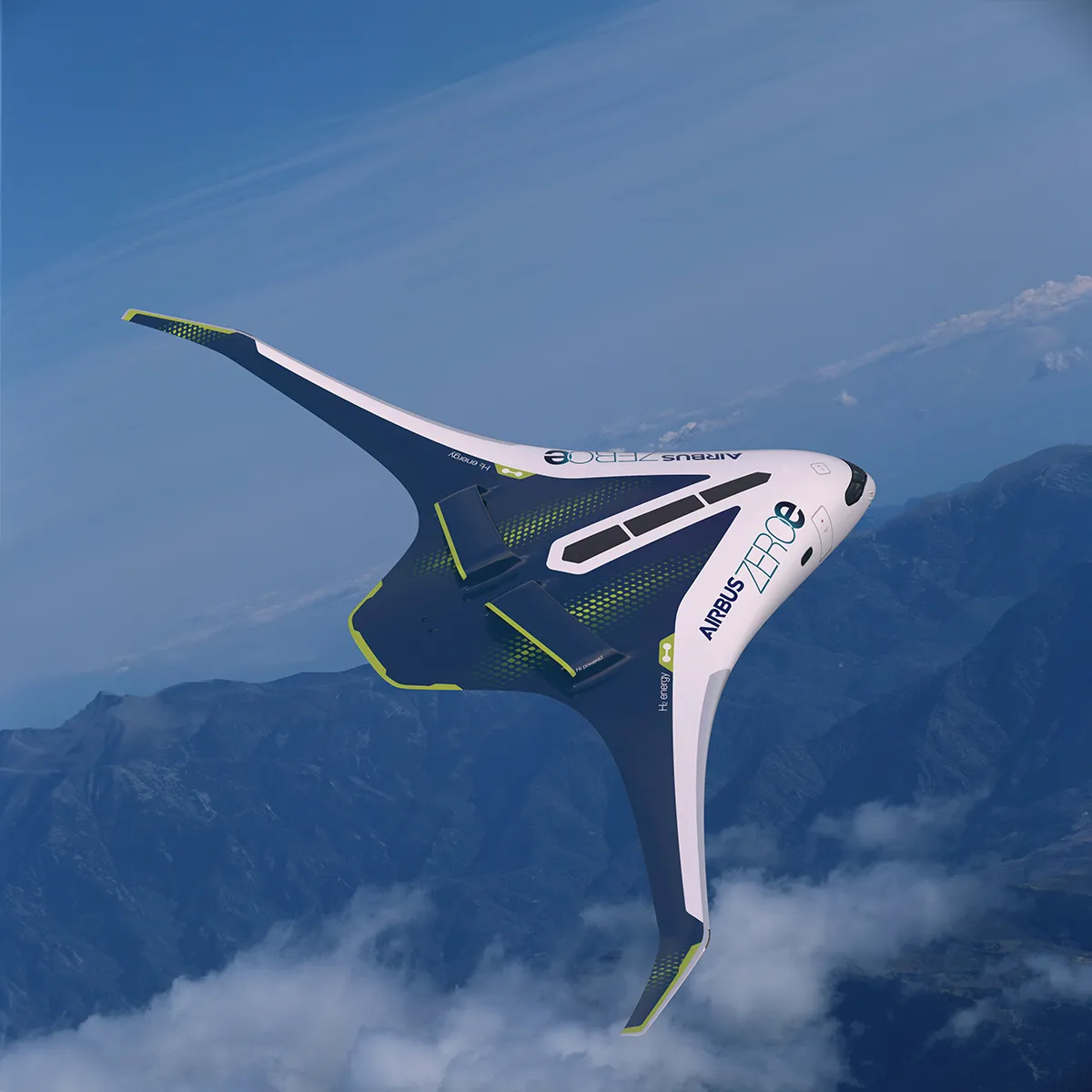
EcoJet, Bombardier’s BWB concept, passed its first scaled-demonstrator flight tests in 2017 and is now starting the second generation with a larger prototype. “Our original idea was to create a more sustainable aircraft without compromising what our customers expect in a business jet,” says Stephen McCullough, Bombardier’s senior VP of engineering and product development. That includes hitting benchmarks for speed, altitude and interior volume that offer at least the same experience as its existing fleet. “The blended-wing-body ticks the majority of those boxes,” he says, while potentially reducing emissions by 20 percent. One challenge with the form is maintaining the plane’s airport-friendly footprint, though McCullough focuses on the positive, noting that the aircraft’s taller, wider cabin “opens up a lot of exciting opportunities” for Bombardier’s interior designers.
Airbus has also spent years developing a twin-engine BWB model it calls Maveric, but real progress came when the manufacturer added the aircraft to its hydrogen-powered ZEROe concepts program, as its larger inherent capacity makes it better for carrying hydrogen than a standard design. A spokesperson for Airbus noted, though, that Maveric remains a construct “not for our first generation of hydrogen aircraft, but for the following ones”.
By contrast, JetZero is fast-tracking a demonstrator to be ready for flight tests in 2027 and market entry in 2030. CEO and cofounder Tom O’Leary is no stranger to disruptive ventures, having worked at Tesla and eVTOL maker Beta Technologies, and the entrepreneur in him was inspired by NASA’s billion-dollar investment in BWB research.
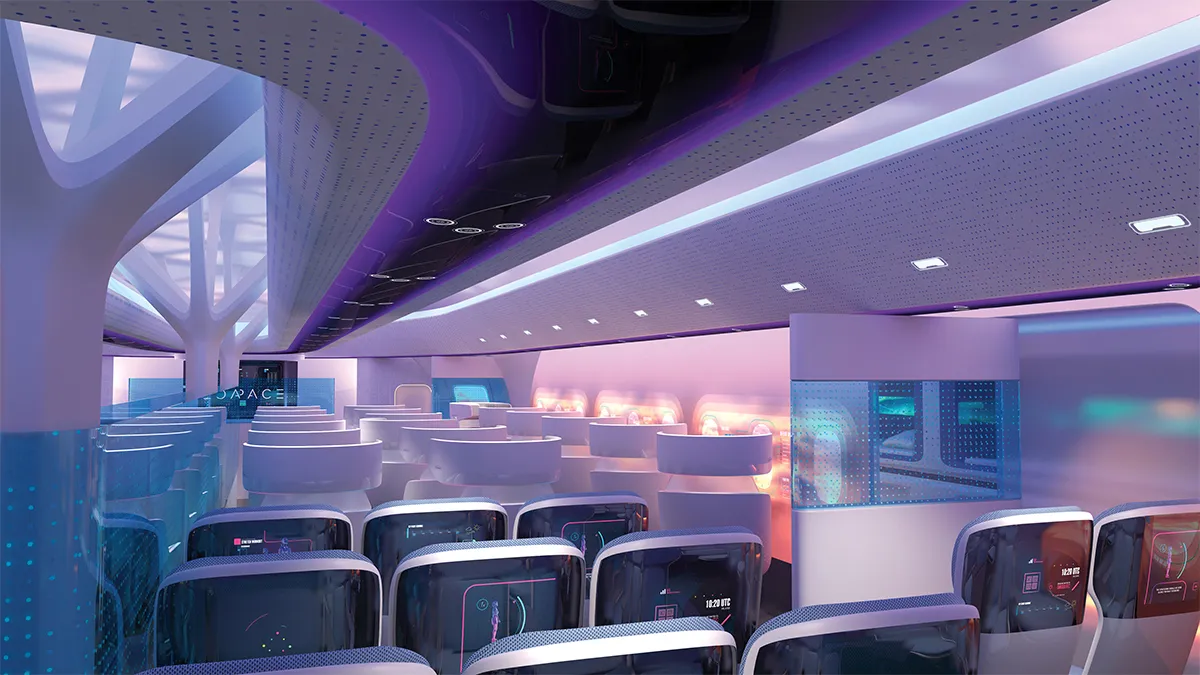
“This design jumped out at me as addressing the biggest challenges aviation has: lowering cost and fuel burn, lowering emissions, improving the passenger experience and enhancing operational efficiency,” he says. The aircraft is being funded by a US$235 million (around $357 million) grant from the US Air Force, where it will initially be conscripted before entering the public sector. O’Leary insists that the tight timeline for JetZero’s efforts is realistic. “This airframe technology has been worked on for 30-plus years,” he says, “and we can use commercially available products for the rest of the plane, including engines, avionics and actuation systems.”
The BWB’s increased useable volume makes it especially suited to utility transport, as evidenced by California air freight specialist Natilus. According to its cofounder, Aleksey Matyushev, Natilus has US$8.6 billion (around $13 billion) in orders for its nascent fleet of autonomous cargo planes, the first of which should see initial flight testing in approximately two years.







